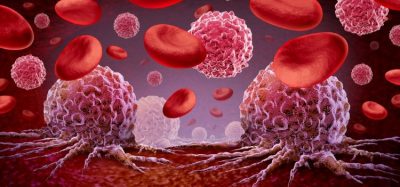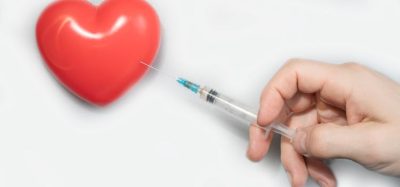Dissolvable microneedle patch may be the answer to baldness
Posted: 12 August 2021 | Anna Begley (European Pharmaceutical Review) | No comments yet
A newly developed investigational microneedle patch caused mice to regrow hair faster than minoxidil, a leading alopecia treatment.


A team at Zhejiang University, China, have created a preliminary microneedle patch containing cerium nanoparticles to combat oxidative stress and insufficient circulation in the scalp, which caused hair to regrow faster in a mouse model than a leading androgenic alopecia treatment, minoxidil.
Usually, patients with androgenic alopecia do not have enough blood vessels surrounding their hair follicles to deliver nutrients, cytokines and other essential molecules. Additionally, an accumulation of reactive oxygen species in the scalp can trigger the untimely death of the cells that form and grow new hair.
The research team had previously determined that cerium-containing nanoparticles can mimic enzymes that remove excess reactive oxygen species thereby reducing oxidative stress in liver injuries, wounds and Alzheimer’s disease. However, these nanoparticles cannot cross the outermost layer of skin. The researchers therefore wanted to design a minimally invasive way to deliver cerium-containing nanoparticles near hair roots deep under the skin to promote hair regrowth.
First, the researchers coated cerium nanoparticles with a biodegradable polyethylene glycol-lipid compound. Then they made the dissolvable microneedle patch by pouring a mixture of hyaluronic acid and cerium-containing nanoparticles into a mould. The team then tested control patches and the cerium-containing ones on male mice with bald spots formed by a hair removal cream.
Both applications stimulated the formation of new blood vessels around the mice’s hair follicles, but those treated with the nanoparticle patch displayed faster signs of hair undergoing a transition in the root, such as earlier skin pigmentation and higher levels of p-S6, a compound only active in hair follicle stem cells at the onset of new hair development. The mice also had fewer oxidative stress compounds in their skin. Finally, the researchers found that the microneedle patches resulted in faster mouse hair regrowth with similar coverage, density and diameter compared with a leading topical treatment and could be applied less frequently.
According to the researchers, microneedle patches that introduce cerium nanoparticles into the skin are a promising strategy to reverse balding for androgenetic alopecia patients that could reach the clinic in the future.
The study was published in ASC Nano.
Related topics
Drug Delivery Systems, Drug Development, Drug Targets, Nano-medicine, Nanoparticles, Preclinical Research, Regenerative Medicine, Research & Development (R&D), Therapeutics









